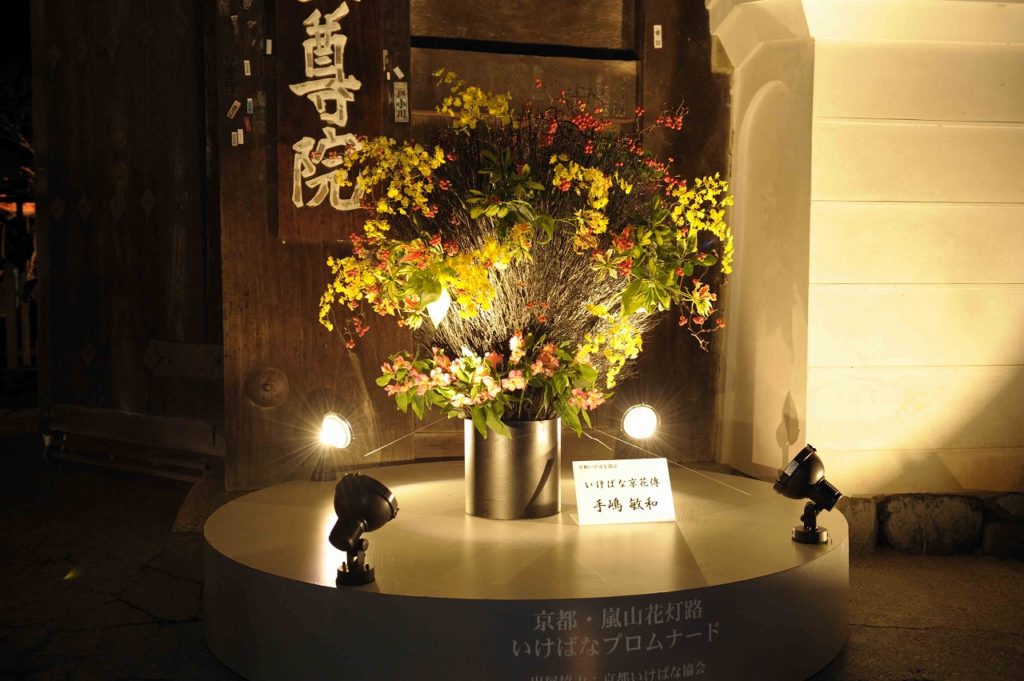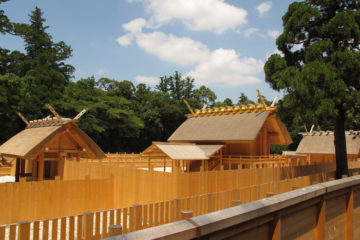Enjoy Kyoto Winters
As the busiest travel season in the year comes to a close, one begins to feel the coolness of winter in the air, and the season where one can even more fully savor trips to Kyoto begins. As there are fewer tourists, one can more carefully observe temples and shrines, and the cold of winter bestows delicious cuisine unlike any other season. This month we will report on the pleasures of Kyoto winters.
As for topics in December, we will begin with “Arashiyama Hanatoro.” The entire area of Arashiyama, with fall colors still lingering, is colored by various illuminations. The paths and alleyways from the Togetsukyo Bridge, passing through the Sagano Bamboo Grove, to the area around the Nison-in Temple are illuminated by paper lanterns which create a deeply Japanese atmosphere, and the bamboo thicket is illuminated in a romantic, wondrous way. The grandeur of the mountains and natural scenery are lit up around the Togetsukyo Bridge, which seems to be floating in its surroundings, and with flower arrangements placed along the pathways, one can enjoy the entirety of Arashiyama in a collaboration of illumination. Temples that are usually closed in the evening have special openings, and the illuminated compounds produce a completely different atmosphere than in the daytime. If you get a little chilly, one can enjoy walking around and trying various hot food and drinks along the way. Arashiyama Hanatoro is held from December 8th (Sat.) to 17th (Mon.) from 5:00 PM to 8:30 PM.
As December approaches, and the hustle and bustle of the city of Kyoto marches on, the “Nishiki Market” which is known as Kyoto’s Kitchen becomes even livelier. Assembled in this market are foodstuffs that people cannot go without in their daily lives such as fish, vegetables, processed foods, and pickles. In the season of intense cold the fish retain their fat and become increasingly delicious. Vegetables which can only be procured in Kyoto, known as “Kyo-yasai (Kyoto Vegetables),” vary from regular vegetables in their coloring and nutritional content. Tofu, which can be found anywhere in Japan, is said to be especially delicious when made in Kyoto, and the food made from tofu skin, made from the same soya beans as tofu, are special products of Kyoto. Also, there are tsukemono pickles made from Kyoto Vegetables, and there are many varieties unique to Kyoto at the Nishiki Market. We will guide you through such products that allow one to enjoy the taste of winter.
One is Our Tour “Sushi Making & Nishiki Market Tour.” It is a plan where participants can try their hand at making their own sushi, the representative food of Japan. Using fish in season become a self-made sushi chef and enjoy the taste of sushi you made yourself. After the sushi making course, there will be a tour of the Nishiki Market. There is a guide who explains things in detail, so you can enjoy discovering and knowing intimately food you have never seen before.
Another recommendation is the Experience Kansai “Kyoto Cuisine Awata Sanso” package. Awata Sanso is an architectural masterpiece built sparing no expense, and the buildings and garden are arranged in harmony on the expansive grounds, bringing about a calming atmosphere. In Kyoto kaiseki cuisine, dishes are brought one at time, and while savoring the appearance and scent of the dishes, one can truly experience the art of eating. In order to make it easier for foreigners to dine, there are set menus with prices indicated beforehand.








0件のコメント